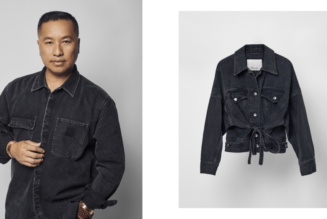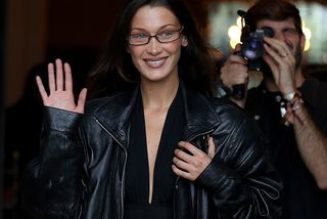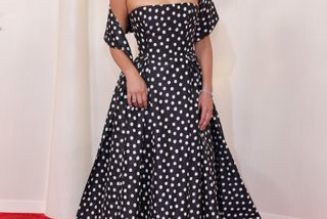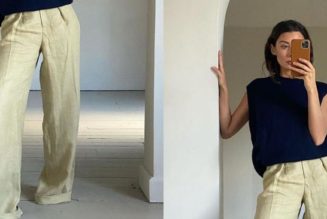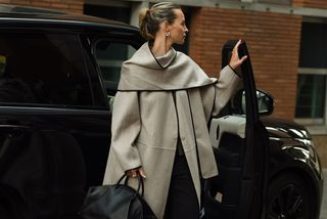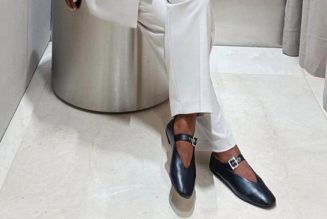Two ageing French billionaires sit atop the global luxury market: Bernard Arnault and François Pinault.
Arnault, 74, is the world’s second richest man with a personal fortune of around $218bn (£170.5bn) and presides over an empire that spans Louis Vuitton luggage, Tiffany diamonds and Moët champagne at LVMH.
Pinault, 86, controls Gucci, Balenciaga, Yves Saint Laurent, Alexander McQueen and through his own conglomerate, Kering.
The pair have spent a lifetime building kingdoms that have helped to cement Paris as the capital of the world of luxury. Both men are preparing to hand their legacy onto the next generation, with both LVMH and Kering likely to remain within family control.
Yet the pair suddenly face a surprise challenge: the first truly American luxury group.
On Thursday, New York-based Tapestry – the owner of Coach handbags and Kate Spade – announced an $8.5bn (£6.7bn) deal to buy Capri Holdings, the parent company of Jimmy Choo, Michael Kors, and Versace.
The deal, spearheaded by Tapestry’s chief executive officer Joanne Crevoiserat, turns the company into a major force in the industry with the heft to compete with Europe.
Crevoiserat, a former Abercrombie & Fitch chief operating officer, joined Tapestry in 2019, shortly after its share price was hammered amid disappointing sales.
She has helped to steady the ship but is now taking a significant gamble with the Capri deal.
Crevoiserat, who also sits on the board of General Motors and has worked at WalMart, said the takeover will create “a new powerful global luxury house”, suggesting ambitions to rival Europe’s biggest names.
Yet shares in Tapestry fell nearly 16pc after the debt-funded deal was announced, amid concerns about slowing sales at home.
“Given a slowdown in luxury spend in their core US market, the combined Tapestry/Capri entity will need to focus on international expansion to achieve material revenue growth in the near term,” says Jonathan De Mello, founder and chief executive of retail consultancy JDM Retail.
“This could indeed well mean taking on LVMH and Kering in their own backyards.”
Capri’s sales fell 9.6pc over the quarter to July 1, it said this week. Rival Ralph Lauren, meanwhile, said North American revenues had fallen 10pc, pointing to an industry-wide downturn.
The slowdown comes after years of booming sales. Sales of luxury goods hit €345bn (£298bn) in 2022, according to Bain & Company. The market is predicted to be worth as much as €570bn (£491bn) by 2030. The fact Bain gives its estimates in euros is telling.
Tapestry and Capri Holdings raked in a combined $12bn in sales last year.
However, the sum is dwarfed by its European rivals. LVMH turned over €79.2bn (£68.5bn) in 2022.
Kering, meanwhile, which also owns Yves Saint Laurent, reported sales of €20.3bn (£18bn) in 2022. The company recently signed a record-breaking deal to open a new Yves Saint Lauren store in London’s Bond Street, agreeing to pay £13m for a six-storey property. Last month it snapped up a 30pc stake in Italian fashion house Valentino for €1.7bn (£1.47bn).
As well as sheer size, LVMH and Kering have prestige and reputation on their side.
“The Arnault family is enmeshed in luxury,” says Neil Saunders, managing director at Globaldata Retail. “They really understand the business in a very deep way. If you look at them and didn’t realise they were family, looked at as a management suite, you would say that’s a really good board you’ve got there.”
Saunders argues that many of Tapestry’s brands are simply not high-end enough to rival those owned by LVMH and Kering. A Coach handbag costs around £450, compared to more than £1,400 for a Louis Vuitton tote.
“[Tapestry and Capri’s brands] are almost like the very high end of the mass market,” Saunders says, “whereas with a lot of the European houses, while they do have some brands that play in the mass market, they are much more sort of rarefied luxury, true luxury brands that operate at the very high end.”
Retail consultant Andrew Busby said: “It’s a bit like a Corvette trying to compete with a Ferrari.”
“Even though Capri has great brands in terms of Jimmy Choo, and Versace, and so forth, they’re quite niche.
“You look at some of the LVMH brands, and they’ve been around for so long, and they just hold a different sort of appeal to people.
“In my view, an American-owned [company] will never be able to compete.”
Rather than fearing the competition, Paris may view the Tapestry deal as simply recognition of their huge success.
Saunders says: “I think this is more about Tapestry wanting to emulate what [LVMH and Kering] do in terms of their business model, which is to have a house of brands that appeal to different segments in slightly different ways and manage them centrally, so that you reduce costs and expand.
“It’s almost like a form of flattery.”
He believes it is the more accessible brands back in the US such as Ralph Lauren and Tory Burch should be most worried about increased competition from Tapestry thanks to its new scale.
“Looking more specifically at the accessible luxury market, Tapestry and Capri creates a player that dwarfs largely independent and mostly private European peers,” adds Luca Solca, senior research analyst on global luxury goods at Bernstein. “I don’t expect any material implications for the global high-end luxury goods industry.”
In any case, Crevoiserat will be hoping that bringing Tapestry and Capri’s brands under one roof will help grow sales even as the US market loses momentum.
“Asia is probably the standout area for growth,” says Saunders. “Travel is resuming, people are going back to offices. So they’re buying more apparel and more goods for those purposes.”


